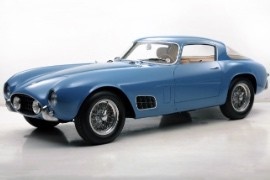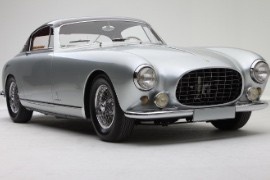
FERRARI 250
Generations Timeline, Specs and Pictures

The story says that the Ferrari 250 GTO was supposed to be named simply the Ferrari 250 GT.
It seems that when the sports car was track-homologated, the nameplate was changed on papers with GTO - “o” from “omologata” in Italian.
The first GT 250 was released in 1960 and the model did not stand out as the revised 250 GTO released in 1962. But why did Ferrari need to redesign everything after only 2 years from their first generation?
The new Formula One World Constructors’ Championship requirements implied a GT - back in the days, the Gran Turismo meant “material differences in performance, speed, comfort, and amenities between elite automobiles and those of ordinary motorists.”
The major differences between the 250GT and the new model were the engine and the wheelbase. The 250 GTO got the Testarosa V12 engine developing 300 hp, while aerodynamics was improved with a longer wheelbase and other chassis changes.
While a pure rally car, once inside the 250 GTO things would get comfortable. The 250 GTO had one of the oddest gear shifting levers seen so far, a tall stick that was perfectly placed to ensure comfortable gear shifting.
The most famous and classic car of all times became iconic due to the several rally races won, as well as the limited number of vehicles produced, only 37. And it seems that all 37 models survived to our days.

The Ferrari 250 GT Coupe was presented at the Paris Motor Show in 1954.
It was the first attempt of the Italian manufacturer to build a car for the normal motorist.
The bodywork was built in the Pininfarina workshop, but soon the shop was unable to keep up with the demand. The Boano coachbuilder came along and helped with manufacturing the bodies. They produced around 80 units in one year. The overall shape was very similar to the Ferrari Europa GT and only a trained eye would notice the differences. The main difference was the shorter distance between the front wheel arch and the A-pillar. Some racing versions were built with aluminum bodywork, but usually, the road-going versions (named Lusso) had only the doors, trunk lid and the hood made out of aluminum.
Inside, there was room for two passengers. Some were fitted with a rear bench with upholstery, but that was just for the insurance companies and tax reductions since the four-passenger vehicles had a deduction in some countries. But it was just an upholstered, inside, luggage platform.
The chassis was made from two main longitudinal tubes with cross bracing and supports for the bodywork. It had front independent suspension and a rear axle with semi-elliptic leaf springs and hydraulic shocks.
The most important evolution over the Europa was under the hood, where the older, long-block, Lamperdi engine was replaced by the short-block Colombo unit. That modification allowed a shorter wheelbase compared to the Europa. And that is why the distance between the front wheel arch and the A-pillar was shorter.

Unveiled at the 1953 Paris Motor Show, the Ferrari 250 Europa was a car designed for the new European rules and preferences.
It used a 3.0-liter V12 based on a design for Formula One 3.3 L engine.
The first cars produced were bodied by Vignale along the lines of the 340 Mexico. The production was moved to Pininfarina, who built a 2-seat cabriolet version. There were clear styling cues with the Ferrari 375 America, with which it shared the same chassis.
The cars were produced with an odd chassis number for the road-going vehicles, while the race-version featured even numbers. Usually, the race versions featured aluminum bodies but some private owners ordered lighter bodyworks for the road-going models.
The long hood and short cabin were a sign for sportiness and the two-door coupe style was elegant. It was built as a 2+2 vehicle, but most of the time the rear seats were mostly used as a padded shelf for luggage.
Even though it was considered a fast car for that era, it was more of a GT vehicle than a sports car. In 1954, the 250 Europa was renamed 250 Europa GT, and then it became known as simply as the 250 GT.
The suspension was independent at the front, with double wishbones and a transverse leaf spring. It was later replaced with individual coil springs. The rigid rear axle was with leaf springs and hydraulic dampers. Hydraulically operated drum brakes were on all four corners. The transmission was a 4-speed manual.























































